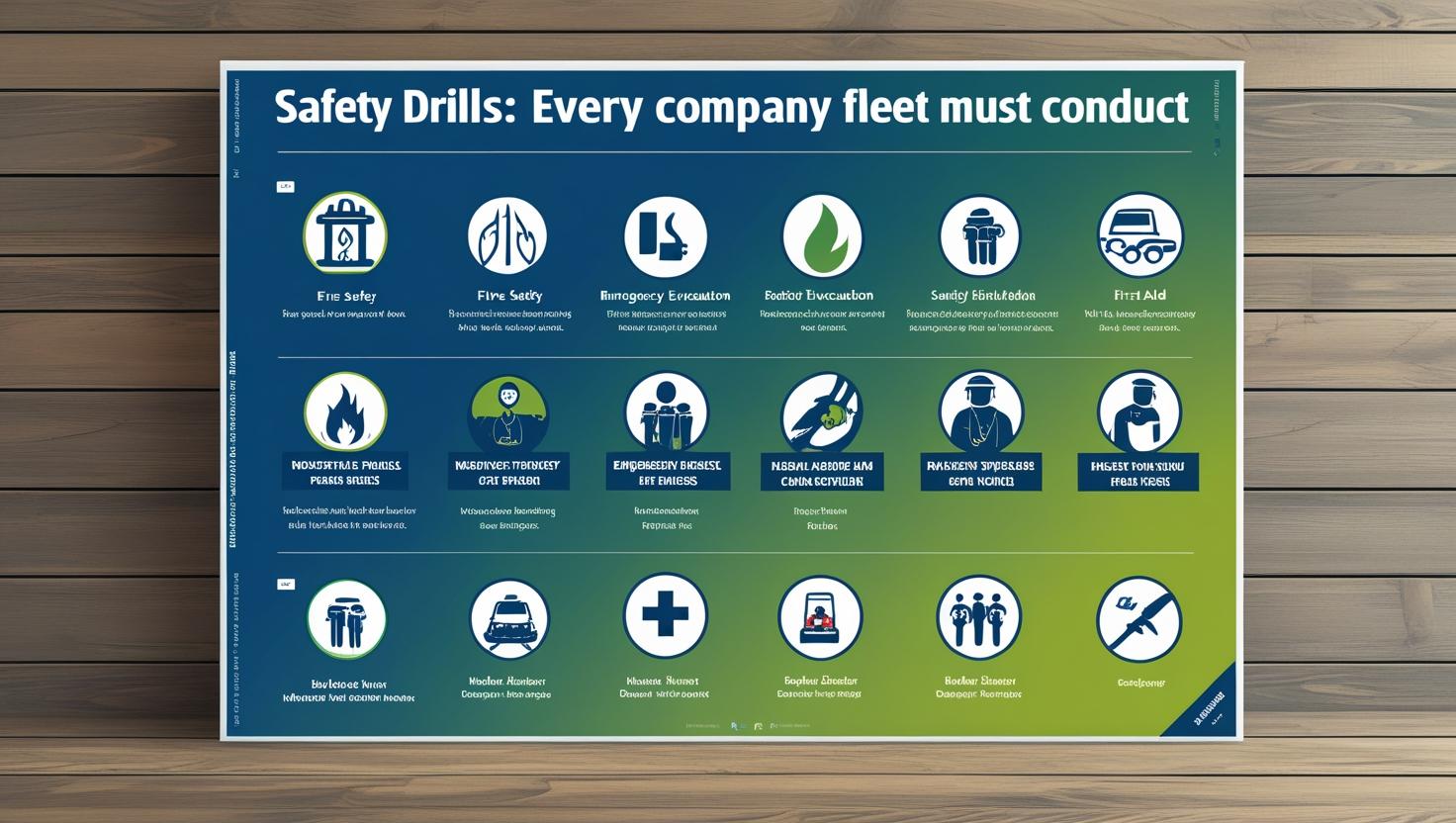Safety Drills Every Company Fleet Must Conduct
In the world of fleet operations, safety is non-negotiable. Whether your company manages delivery vans, trucks, or corporate transport vehicles, well-trained drivers and staff are critical to reducing accident risks. Safety drills are a proactive way to prepare fleet teams for real-world emergencies, reinforce safety protocols, and ensure compliance with industry standards.
When conducted regularly, these drills not only save lives but also reduce downtime, repair costs, and legal liabilities. Below are the most important safety drills every company fleet should conduct.
1. Emergency Braking Drill
One of the most critical skills for any driver is the ability to stop a vehicle quickly and safely in an emergency.
Purpose:
- Improve reaction times in sudden hazard situations.
- Teach correct braking techniques to prevent skidding.
Execution:
- Use a controlled environment like a training ground.
- Practice braking at various speeds and in different conditions (wet, dry, gravel).
2. Tire Blowout Response Drill
A tire blowout at high speed can cause loss of control and serious accidents.
Purpose:
- Teach drivers how to stay calm and avoid oversteering.
Execution:
- Simulate a tire blowout scenario using a training device.
- Emphasize slowing down gradually and steering steadily to safety.
3. Fire Safety and Evacuation Drill
Vehicle fires can escalate quickly. Knowing how to act in the first few seconds can save lives.
Purpose:
- Ensure drivers know how to use fire extinguishers effectively.
- Practice safe evacuation of passengers or cargo.
Execution:
- Conduct hands-on fire extinguisher training.
- Simulate fire scenarios with smoke machines for realism.
4. First Aid and Accident Response Drill
Immediate first aid can prevent fatalities in the event of a crash.
Purpose:
- Train drivers to provide basic first aid until professional help arrives.
Execution:
- Use mannequins to practice CPR and wound care.
- Simulate accident scenes to teach safe victim approach.
5. Hazardous Material Spill Drill
For fleets carrying chemicals, fuels, or other dangerous goods, spill response is critical.
Purpose:
- Prevent environmental damage and comply with safety regulations.
Execution:
- Practice containment procedures with absorbent materials.
- Train drivers in proper reporting and cleanup processes.
6. Night Driving and Low-Visibility Drill
Accidents are more likely in poor visibility conditions.
Purpose:
- Help drivers adapt to reduced light and increased fatigue risks.
Execution:
- Conduct after-dark driving sessions in low-lit environments.
- Practice hazard detection and safe overtaking techniques.
7. Defensive Driving Simulation
Defensive driving reduces collision risks by anticipating hazards.
Purpose:
- Instill proactive driving habits.
Execution:
- Use driving simulators or real road scenarios.
- Train in hazard recognition, safe following distances, and speed management.
8. Vehicle Inspection Drill
Many accidents are caused by preventable mechanical failures.
Purpose:
- Ensure drivers can identify vehicle issues before trips.
Execution:
- Practice pre-trip inspections covering brakes, lights, tires, and fluids.
- Conduct timed inspection challenges for efficiency.
Conclusion
Safety drills are not optional—they are an investment in your fleet’s reliability, your company’s reputation, and the safety of everyone on the road. At Hubert Ebner India, we believe that prevention is always better than reaction. By conducting these drills regularly, companies can ensure that their drivers are well-prepared for any situation, leading to fewer accidents, lower operational costs, and a stronger safety culture




